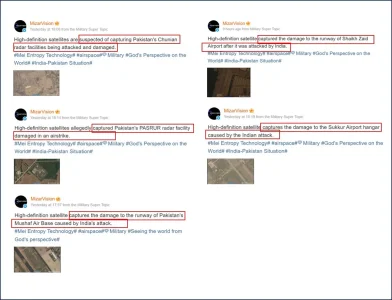A Hypothetical Nuclear War Scenario: India and Pakistan
India found itself at the receiving end of Pakistan’s nuclear brinkmanship. Yet, it wasn’t just India that was concerned—Washington was far more alarmed by Pakistan’s decision to activate its Nuclear Command Authority, signalling a climb up the escalation ladder. Having lost the conventional drone and missile exchanges with India, Pakistan’s last remaining card was the nuclear threat, a desperate move to salvage national as well Army chief’s personal prestige from the depths.
The sequence of events in Pakistan was well-documented by the media, with outlets like pro-Pakistani CNN highlighting growing American unease. The long-believed myth of the U.S. possessing a “kill switch” to neutralise Pakistani nuclear weapons was exposed as false. Though Pakistan had not yet mated warheads with delivery systems—missiles or aircraft—it was clearly preparing for that final step toward launch readiness.
India’s Response: Silent, But Ready
While no official details have emerged from the Indian side, it is almost certain that New Delhi was on the verge of ordering or ordered the mating of its own nuclear warheads with delivery systems. India could not afford to be caught unprepared if Pakistan initiated a nuclear strike.
Imagine Pakistan, having nothing more to lose, launches a 5-kiloton nuclear bomb at India. With an estimated arsenal of 170 nuclear weapons, ranging from 5 to 100 kilotons, a first strike would likely be followed by a rapid succession of attacks—targeting India’s command and control infrastructure and nuclear storage sites.
Would India be devastated? Not entirely.
India’s multi-layered air defence network, tested and proven during Operation “Sindoor,” is capable of intercepting incoming missiles and aircraft. Coupled with its exceptional intelligence capabilities, India would likely receive early warning once Pakistan began mating warheads, prompting a swift preemptive response.
Rather than opting for massive retaliation, India could conduct precision nuclear strikes on key Pakistani nuclear assembly points and missile silos—especially the critical assembly site at Sargodha—before warheads are fully mated and launched. The goal: neutralize the threat without triggering widespread collateral damage. Pakistan’s strategy of dispersing nuclear components across the country is only effective if it can assemble them before being struck.
Ultimately, Indian success would hinge on timely intelligence and the readiness to act decisively.
A Close Call never happened hence did not get Averted
Though hypothetical, this scenario is grounded in reality. Behind the speculation lies a dangerous truth: nuclear escalation between India and Pakistan is not only possible but terrifyingly plausible.
We must acknowledge the role of President Trump and his administration, whose intervention reportedly helped prevent a full-blown nuclear crisis at a time when Pakistan was already reeling from conventional warfare.








